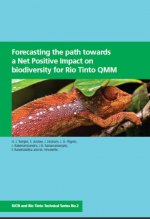Forecasting the path towards a Net Positive Impact on biodiversity for Rio Tinto QMM
By Helen Temple, Stuart Anstee, Jon Ekstrom, John D Pilgrim, J. Rabenantoandro, J-B. Ramanamanjato, F. Randriatafika , M. Vincelette - The Biodiversity Consultancy, Rio Tinto, The Biodiversity Consultancy, The Biodiversity Consultancy View PublicationRio Tinto is committed to achieving a Net Positive Impact (NPI) on biodiversity at
sites where it operates, a strategy launched at the 2004 IUCN World Conservation
Congress and reinforced at the 2008 Congress (Rio Tinto, 2008a). The Rio
Tinto ilmenite mine in the Fort Dauphin region of southeastern Madagascar
run by QIT Madagascar Minerals (Rio Tinto QMM) has been chosen as one of
Rio Tintos pilot sites to test the tools designed to achieve and quantify NPI on
biodiversity. It consists of three sites to be mined sequentially (Mandena, Ste
Luce and Petriky), a new deepwater port, and ancillary infrastructures such as
roads, quarry, housing and industrial areas (Figure 1). Mining at the first of
these three sites, Mandena, began in 2009. Rio Tinto QMM has made a formal
commitment in its Biodiversity Action Plan to achieve NPI on biodiversity.
The most important direct negative biodiversity impact resulting from Rio Tinto
QMMs activities is the loss of littoral forest habitat at Mandena, Petriky and Ste
Luce. Littoral forest is a rare and threatened habitat within Madagascarc.90%
of this habitat type has already been lost as a result of human activities (Consiglio
et al., 2006). Approximately 1,665 ha (3.5% of Madagascars remaining 47,900
ha of littoral forest) is expected to be lost to dredging, which entails not only
clearance of vegetation but also removal of soil and its constituent seed bank.
Littoral forests on the mining concession harbour many restricted-range species
and species classified as Threatened by the IUCN Red List, including 42 plants
and at least 14 invertebrate species that are found nowhere else in the world.
The project will have substantial residual impacts on a number of these species.

